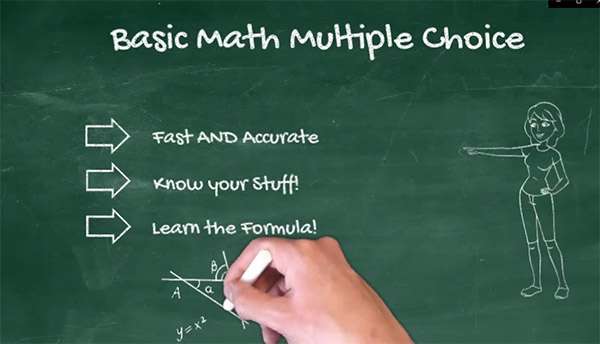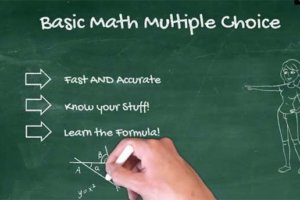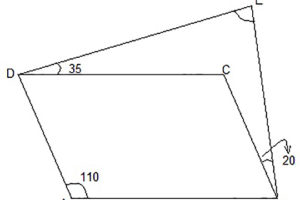
How to Answer Basic Math Multiple Choice
- Posted by Brian Stocker
- Date January 1, 2020
- Comments 3 comments
Video Tutorial
Audio Version
How to Answer Basic Math Multiple Choice
The time allowed on the math portion of a standardized test is typically so short that there’s no room for error. You have to be fast and accurate.
Math strategy is very helpful, but nothing beats knowing your stuff! Make sure that you have learned all the important formulas that will be used.
If you don’t know the formulas, strategy won’t help you.
How to Answer Basic Math Questions – the Basics
First, read the problem, but not the answers.
Work through the problem first and come up with your own answers. Hopefully, you should find your answer among the choices.
If no answer matches the one you got, re-check your math, but this time, use a different method. In math, there are different ways to solve a problem.
Try a FREE Math Quiz
Test your Basic Math Skill with a FREE Quizzes
Math Multiple Choice Strategy
The two strategies for working with basic math multiple choice are Estimation and Elimination.
Estimation is just as it sounds – try to estimate an approximate answer first. Then look at the choices.
Elimination is probably the most powerful strategy for answering multiple choice.
Eliminate obviously incorrect answers and narrowing the possible choices.
Example #1
Solve 2/3 + 5/12
a. 9/17
b. 3/11
c. 7/12
d. 1 1/12
First estimate the answer. 2/3 is more than half and 5/12 is about half, so the answer is going to be very close to 1.
Next, Eliminate. Choice A is about 1/2 and can be eliminated, choice B is very small, less than 1/2 and can be eliminated. Choice C is close to 1/2 and can be eliminated. Leaving only choice D, which is just over 1.
Work through the solution, find a common denominator and add. The correct answer is 1 1/12, so Choice D is correct.
Example #2
Solve 4/5 – 2/3
a.2/2
b. 2/13
c. 1
d. 2/15
First, quickly estimate the answer. 4/5 is very close to 1, and 2/3 more than half, so the answer is going to be less than 1/2.
Choice A can be eliminated right away, because it is 1. Choice C can be eliminated for the same reason.
Next, look at the denominators. Since 5 and 3 don’t go into 13, choice B can be eliminated as well.
That leaves choice D. Checking the answer, the common denominator will be 15. So the answer is 2/15 and choice D is correct.
Date Published: Wednesday, January 1st, 2020
Date Modified: Friday, May 3rd, 2024
Got a Question? Email me anytime - Brian@test-preparation.ca
You may also like

Basic Math Video Tutorials
How to Solve Linear Inequalities – Quick Review and Practice
Basic linear inequalities have one of the following forms: ax + b > 0 ax + b < 0 ax + b > 0 ax + b < 0 where a and b are some real numbers. Our solution to …


3 Comments
Example 1 is wrong. the right answer is 13/12
1 1/12 = (12/12 + 1/12) = 13/12
Look closer it is 1 1/12 NOT 11/12